| Your browser is not supported. | ||
|
Please browse our site using any of the following options:
| ||
Camping Beds Buying Guide
A good night's sleep puts you in a good mood so you make the most of outdoor adventures, and your bed has the biggest impact on whether you're a happy camper. Having a comfortable camping bed plays a massive role when it comes to enjoying a camping holiday. A restful night's sleep helps you build the energy reserves you need to make it through a busy day of hiking, bushwalking, mountain biking or chasing after your kids. Even if your daily itinerary involves doing absolutely nothing, not being able to sleep comfortably can leave you in a grumpy mood and wishing you were at home in your own bed rather than getting into the spirit of your camping adventure. This Camping Bed Buying Guide outlines the key things to consider when weighing up different beds, so it's easier to work out which one's best for you.
Quick Links
- Camping Beds FAQs
- What Is The Best Camping Bed?
- Different Types Of Camping Beds
- Camping Bed Materials
- Determining The Quality Of A Camping Bed
- Choosing The Right Sleeping Set-Up For You
Camping Bed FAQs
What is R value?
The R-value of camping beds measures their thermal resistance, indicating how well they insulate against cold ground. Higher R-values denote better insulation. This factor is crucial for warmth and comfort during outdoor adventures, especially in chilly conditions. Choosing a camping bed with an appropriate R-value helps campers stay cozy and sleep soundly even when camping in colder climates.
What is the most comfortable bed for camping?
The most comfortable bed for camping typically features sufficient cushioning and support to alleviate pressure points. It should also be portable, durable and easy to set up. Factors like size, weight and insulation properties contribute to overall comfort. Additionally, considering personal preferences, such as sleeping position and desired firmness, aids in selecting the ideal camping bed for a restful outdoor experience.
What do you put under an air mattress when camping?
When camping, placing an insulating layer beneath an air mattress is vital for comfort and warmth. Common options include foam pads, sleeping pads or specialised camping mats. These provide cushioning, prevent heat loss to the ground, and shield the mattress from punctures or abrasions. Choosing the appropriate underlay depends on factors like desired insulation, weight and packability for the camping trip.
How can I make my camping bed more comfortable?
To enhance camping bed comfort, consider adding layers like foam mattress toppers or inflatable pads for extra cushioning and insulation. Utilise quality bedding such as sleeping bags or blankets to regulate temperature and provide coziness. Adjust the bed's firmness to personal preference. Additionally, ensure the camping site is level and free from debris to prevent discomfort.
What Is The Best Camping Bed?
Everyone's different, and like many things in life, what's best for one person might not be best for the next. The best camping bed for you depends on your particular needs:
- Where you'll use the bed (will it be hot or cold, and will the ground be rocky?)
- How you're getting your bed there (are you taking a car or 4WD, or going hiking?)
- What position you sleep in (on your back or on your side and do you toss and turn?)
- If you have a bad back or bad knees (so need a bed that's easy to get in and out of)
- Who'll be using the bed, both now and in the future (anyone tall, or is it for kids?)
- How fast you want to be able to set it up and pack it down (in seconds or minutes?)
- How often you'll be camping and for how long (on weekends only or for a few weeks?)
- How long you want it to last (for a few short trips or for many years of camping?)
The Different Types Of Camping Beds
There are different types of camping beds, and they all have different benefits. Think about what's important to you and which type you'd prefer to sleep on.
Hiking Sleep Mat
Hiking sleeping mats are the lightest, most compact and easiest to set up. They're perfect for hiking, backpacking, expeditions and festivals and can be used on the ground, on top of a fold-out bed or in a swag or back of a 4WD. Higher-density sleep mats with a higher R-value will keep you warmer and more comfortable. If you're a cold ‘cold sleeper’, then you'll want a sleep mat with an R-value of at least 4. Hiking mats are designed to be used on the ground but they're also great as added softness on top of a fold-out bed. Sleeping mats are an ideal accompaniment to a swag (many swags even come with a built-in sleeping mat), as well as rolling out in the back of your 4WD for a quick and convenient bed.
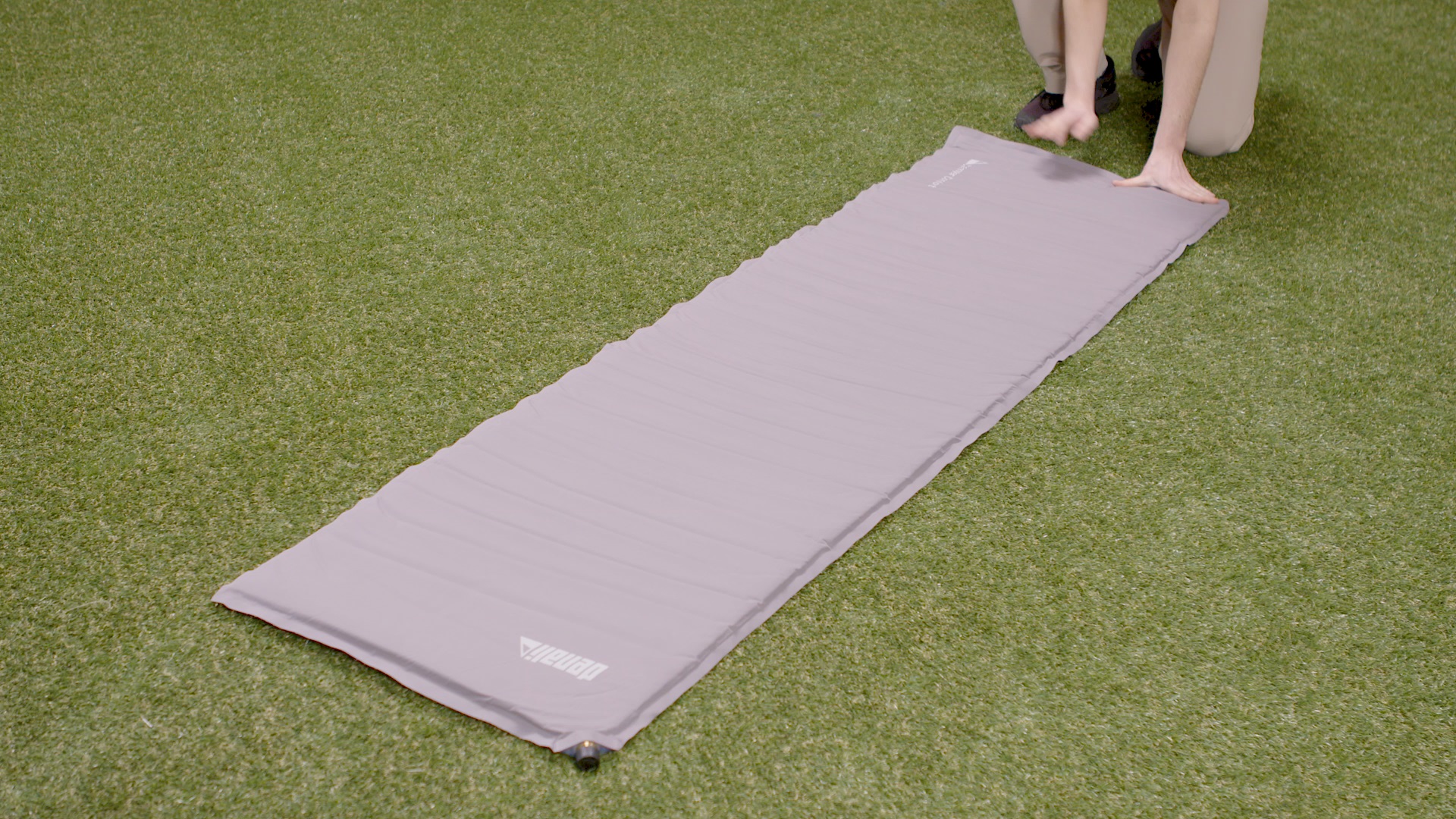
Self-Inflating Mats
Self-inflating mats, like their foam-filled cousins, are another option for the camper or hiker looking for a more compact sleeping solution. Self-inflating mats have a valve that, when opened, inflates air around the foam, making them ideal for off-the-grid camping or campers who don't want to compromise on comfort when using a non-powered site. Top tip: Whether you go for a 'traditional' sleeping mat or a self-inflating mat, check for the hiking mat's R-value, which is a measure of its warmth. The higher the R-value, the warmer and more comfortable your mat will be. If you're a side sleeper, thicker sleeping mats will be more comfortable for you, and also consider purchasing a waterproof bag so your mat doesn't get wet in the rain when you're out hiking or bushwalking.
Fold-Out Bed/Stretcher
Fold-out beds (also known as stretchers) have traditionally been the go-to sleeping arrangement for campers. Stretchers come mostly in single and double-bed sizes and most can be packed down into small carry bags, making them ideal for no-fuss transporting and compact storage when they're not in use. There are also bunk-bedding options for families looking to maximise the space in their tent or caravan annex. Fold-out beds come into their own when the ground at your campsite is too firm for a mat. The raised stretcher enables cool air to circulate under your bed on warm nights, leading to a more comfortable night's rest. Nowadays, most stretcher mattresses are comfortable enough on their own but many campers swear by adding a second mattress or a sleeping mat for that extra level of comfort. Note that stretchers that feature cross-legged frames tend to provide better balance and are sturdier than traditional camp stretcher frames.
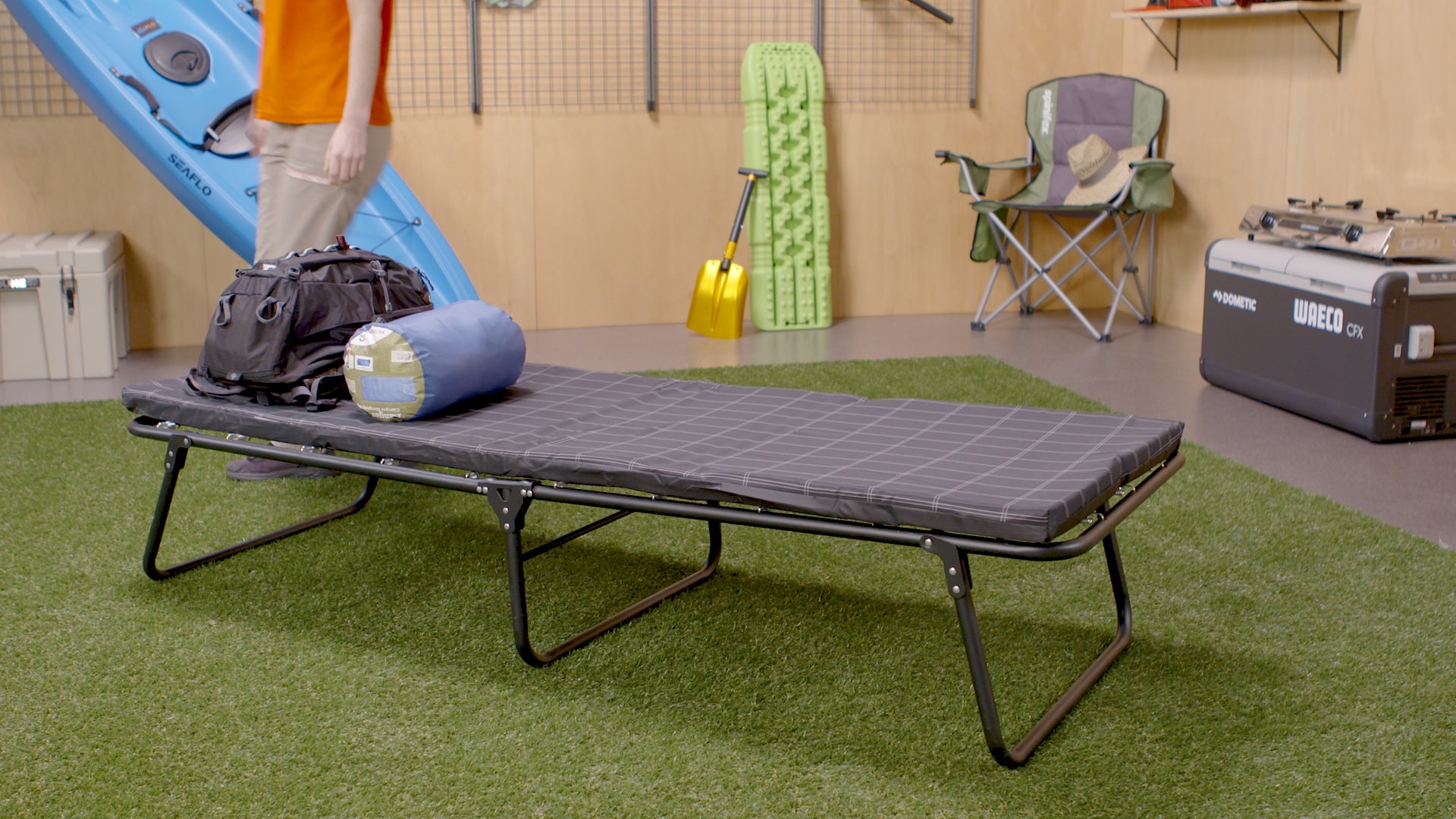
Air Beds & Air Mattresses
Air beds and air mattresses are arguably the clubhouse leader in popularity for today's camper because of their durability, comfort, ease of set-up and how compact they can be when not in use. Their height is also a big plus, making them easy to get in and out of. The downside to air beds and air mattresses is they don't have much insulation so, without a blanket underneath you, it can lead to a cold night's sleep in the cooler months, and because the air is unable to circulate underneath like it can with a stretcher or fold-out bed, they can be warmer than desired in summer. Air beds come in self-inflating models or ones that allow you to add air yourself. If you choose a manually inflating air bed, make sure you buy a battery-powered pump - otherwise you'll spend your whole day inflating your air mattress with a foot pump! It's normal for air beds to need regular air top-ups over a number of nights.
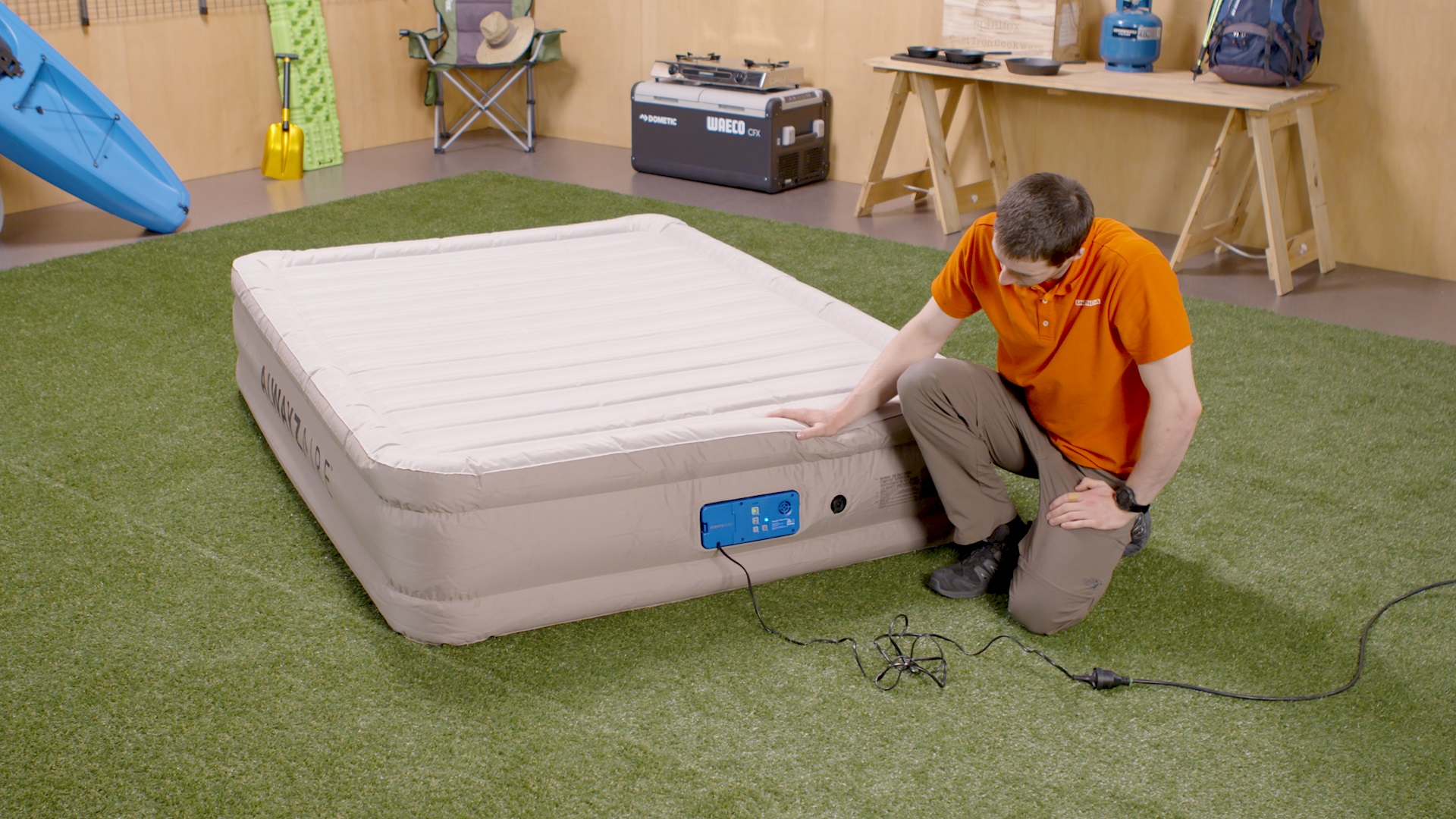
Hammocks
Hammocks are synonymous with afternoon naps on a summer's day but they can also be a great sleeping solution for the truly adventurous outdoor sleeper. While hammocks have traditionally been tied between trees, many of today's hammocks come with an easy-to-set-up and easy-to-store metal frame, capable of accommodating all kinds of body weights and sizes. Just like stretchers, the airflow underneath a hammock makes them ideal for a comfy night's sleep in the warmer months and, like an air mattress, a warm blanket or sleeping mat under the sleeping bag on your hammock can help you stay warmer on the cooler nights.
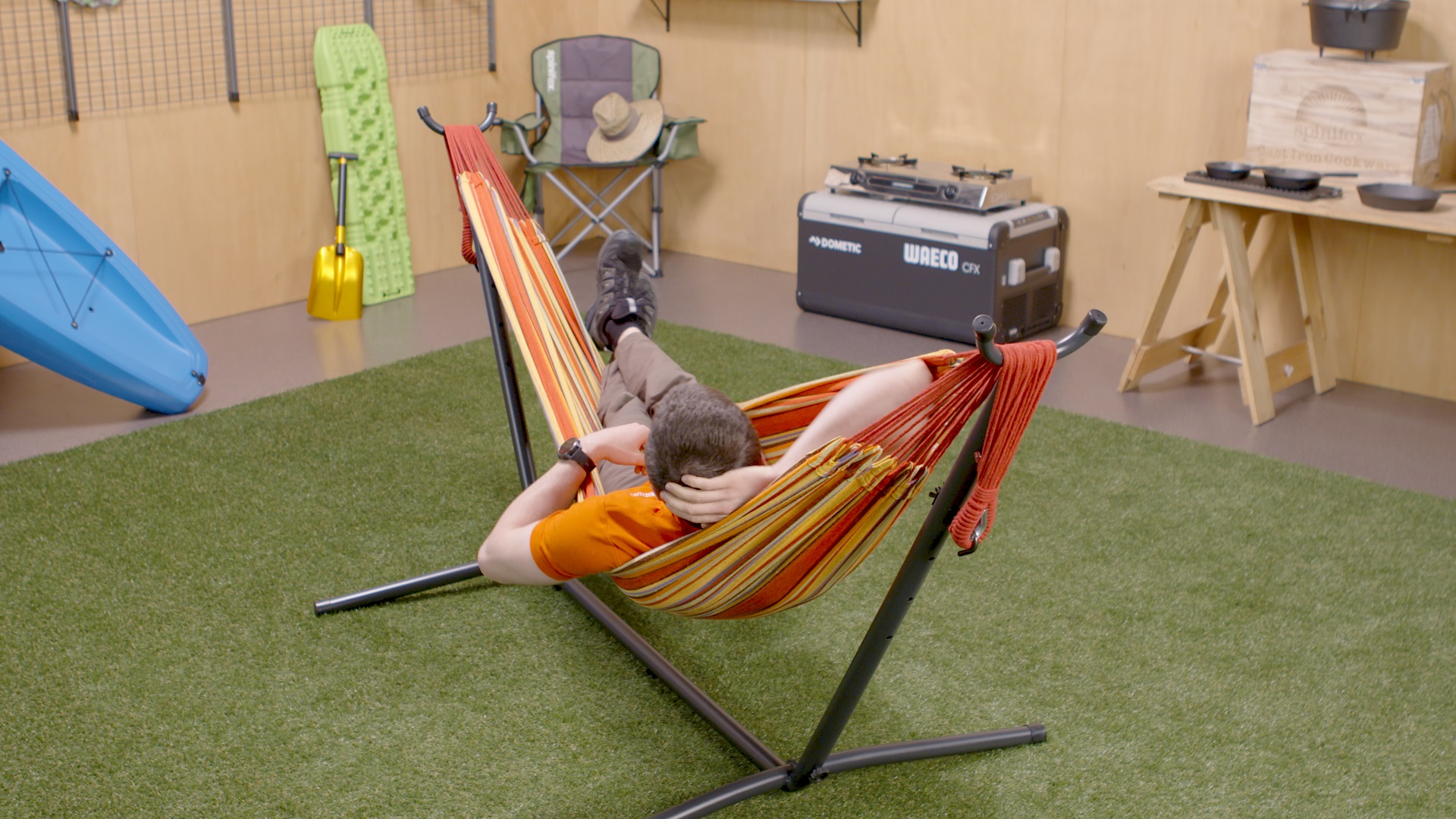
Choosing The Right Camping Bed Size
When choosing a camping bed, consider portability, weight capacity and comfort. Opt for a size that fits your tent dimensions and personal space needs. Ensure it's easy to set up and pack away. Evaluate insulation for warmth and durability for outdoor conditions. Consider the camping bed's material for breathability and moisture resistance. Assess its stability on uneven terrain and its ability to withstand outdoor elements. Prioritise compactness for transportation and storage. Test comfort levels for a good night's sleep. Ultimately, balance size with functionality to ensure a restful camping experience without compromising on convenience or quality rest.
Set-Up Simplicity Of A Camping Bed
How easy do you want setting up the bed to be, and packing it up when it's home time? Roll-out hiking mats and self-inflating mats are the quickest, easiest beds to set up. An airbed with a built-in pump is set up a lot faster than a manually inflated airbed. Stretcher beds are the heaviest to carry and take a little longer to set up. Bunk beds need to be put together so they're better for longer camping trips.
Camping Bed Materials
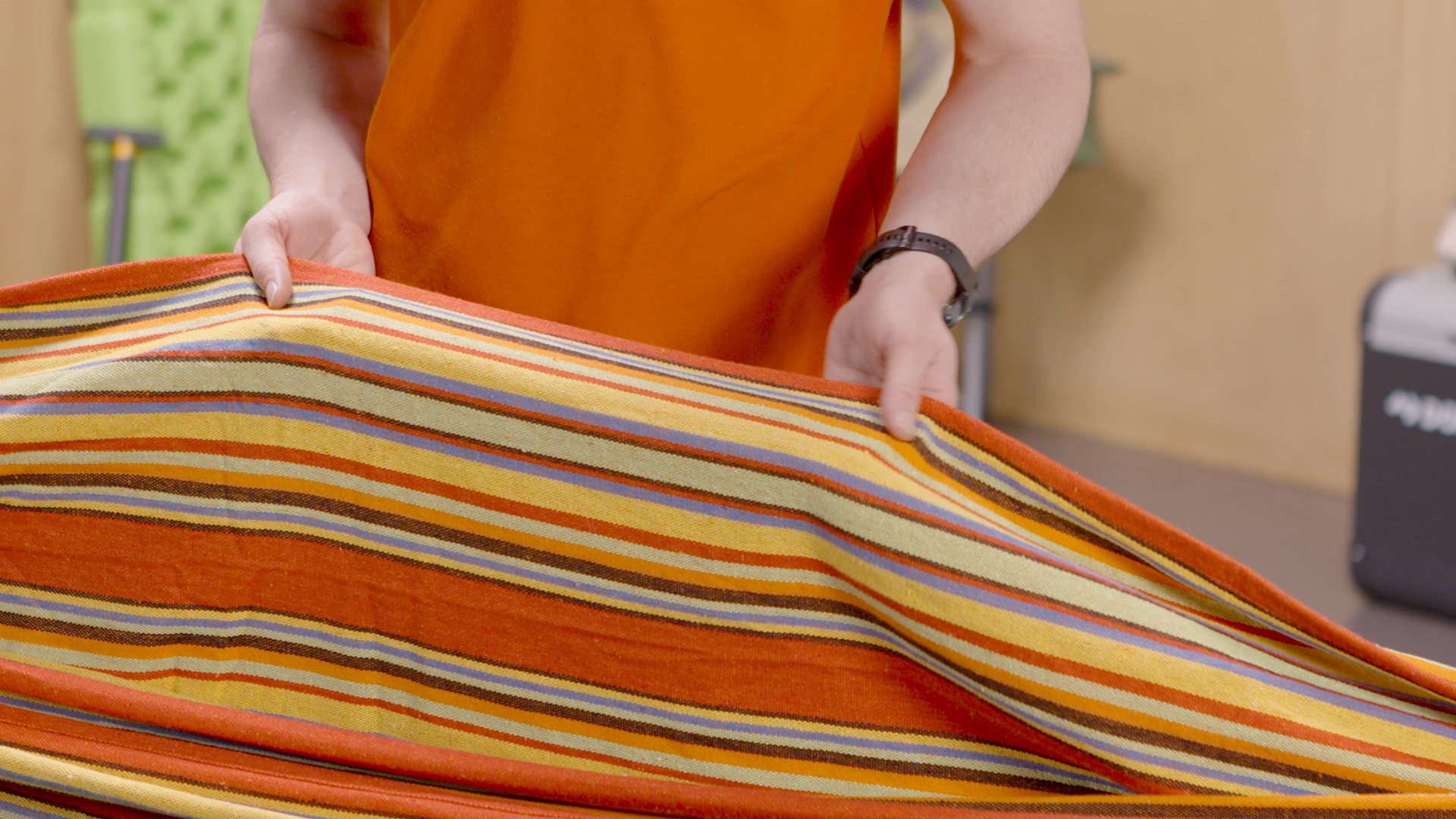
The materials a camping bed is made from determines how waterproof and long-lasting it'll be. Here is a breakdown of the materials most commonly found in camping beds:
Fabric
- Weight: The fabric's thickness is given in denier (D). A higher ‘D’ bed is more waterproof and durable.
- Durability: RipStop fabric helps prevent rips from growing into big rips and makes it easier to repair.
- Nylon: Thin and light so it’s good for backpacking and is used for making lightweight hiking mats.
- Polyester: Waterproof, so ground dampness doesn't seep through, and is used for most fold-out beds and mats.
- Polycotton: More breathable than polyester, and is stronger and lighter than cotton. Polycotton also usually has a waterproof coating.
Frame
How sturdy a camping bed's frame is will determine factors such as how much weight it can bear, whether it wobbles when you toss and turn, and how long the bed will last. When it comes to the strength and sturdiness of the camping bed frame: thicker legs are sturdier and last longer (but are also heavier), and camping beds with legs that cross over are sturdier than straight-legged camping beds. Many beds have steel frames, but these can get rusty if they ever get wet. A powder-coated steel frame that's rust-resistant will last longer than steel and an aluminium frame is lighter than steel - but steel is stronger and lasts longer.
Determining The Quality Of A Camping Bed
When you're weighing up which bed to buy, think about quality versus cost. Stretcher beds are usually cheaper than self-inflating and hiking mats, and you can buy airbeds and mats in similar sizes for fairly similar prices. Airbeds you have to inflate manually are cheaper than self-inflating mats, and airbeds with good valves and seams won't deflate as much during the night. Double-height airbeds usually cost more than lower-to-the-ground airbeds. When it comes to how much you should spend on a bed, think about how much sleep matters to you and how well future guests will sleep. Cheaper camping beds don't tend to last as long - so you get what you pay for. If you camp regularly or for more than a few days a time, spending a bit more gives you years of comfortable camping. Factor in the cost of anything else you may want to buy like an airbed pump, inflatable pillow or sleeping bag.
Choosing The Right Sleeping Set-Up For You
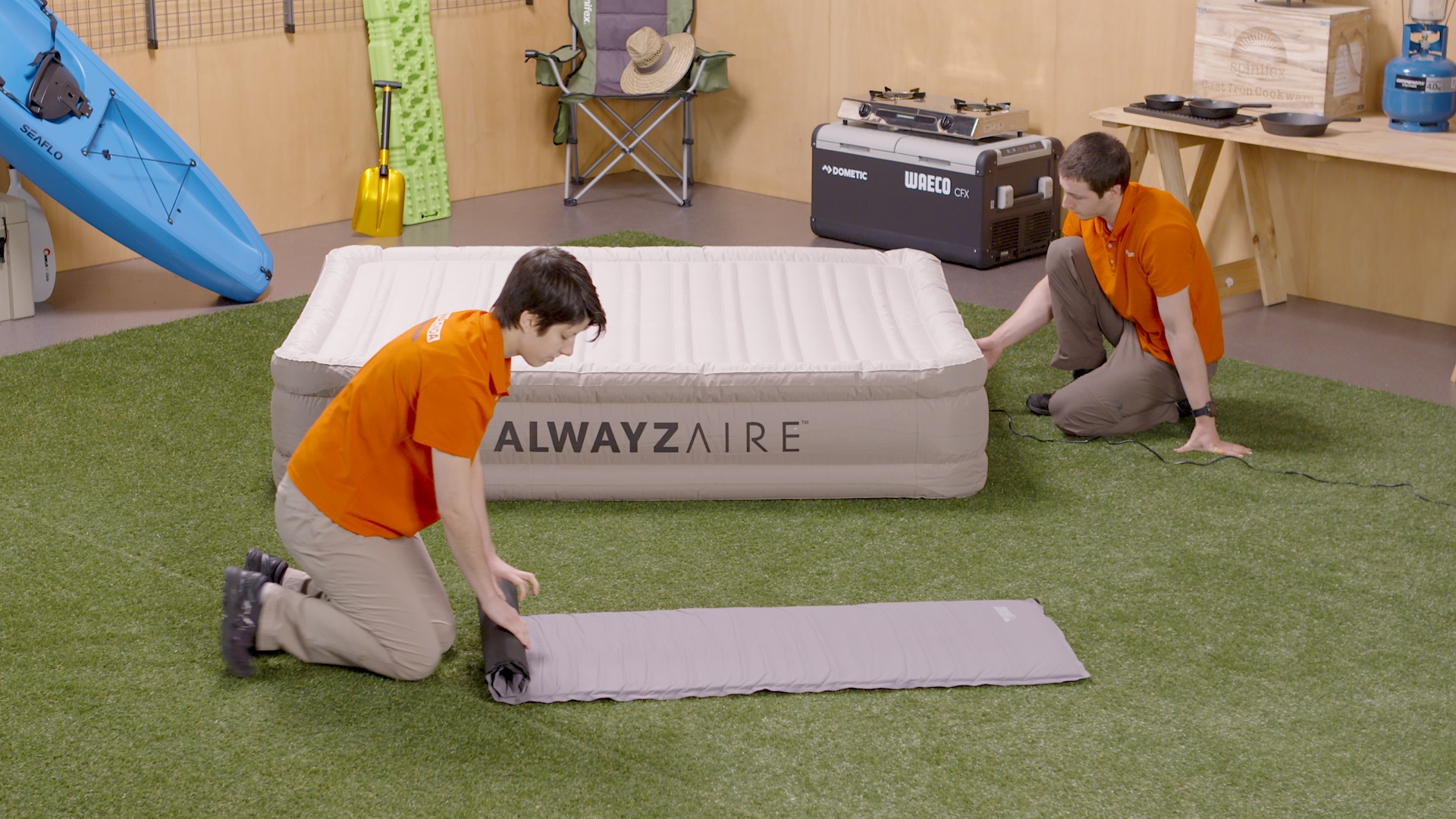
Before throwing down your hard-earned dollars, there are a few things you should think about when choosing the best camping bed for your purposes:
- If your camp mattress is going to get a lot of regular use, then you really need to consider something made from quality, long-lasting materials and something that is easy to maintain to ensure that you get good value for money.
- If you only plan on using a camp bed a couple of times a year or infrequently (at summer music festivals, for example), you may not need to spend as much money but you should still look for a stretcher, sleeping mat, air mattress or hammock made from quality materials and sturdy construction.
- Knowing where you'll be using the bed will be a huge help in deciding the best camping bed to buy. If your favourite camping locations have predominantly rocky and uneven ground, then a stretcher or air mattress with some kind of tarp or matting under it might be more useful to help protect against punctures. Camp stretchers and air mattresses are also great for people with back and hip issues because you don't have to get down to floor level to get in and out of bed, and they're the smart choice for side sleepers who need the extra support they give your head and neck.
- Hiking or not, hiking mats are great for people who don't require oodles of support to get to sleep, as well as people who want a lightweight bed or just want something simple to unpack at night and roll up the next morning. When shopping for a hiking mat, look for options made of rip-stop materials - materials that are designed specifically to prevent little tears from becoming big ones.
Find The Best Camping Beds At Anaconda Today
Don't underestimate the importance of a good night's sleep when you're camping. Just because you're roughing it in nature doesn't mean you have to compromise on comfort to catch those all-important zzzs. Finding the best camping beds for you and your family's sleeping preferences is easy and doesn't need to cost the earth. Make sure you check out our Adventure Centre for more helpful tips and exciting destinations that you can visit with your friends, loved ones and family. If you liked our Camping Beds Buying Guide, then you might also like some of our other articles for helpful fishing tips such as:
- Essential Camping Gear For The Solo Adventurer
- Ultimate Checklist For Hiking Essentials
- Hiking Essentials Buying Guide
- 10 Reasons To Invest In Quality Hikers
Find your local Anaconda store and check out our extensive camping beds range for your next outdoor adventure